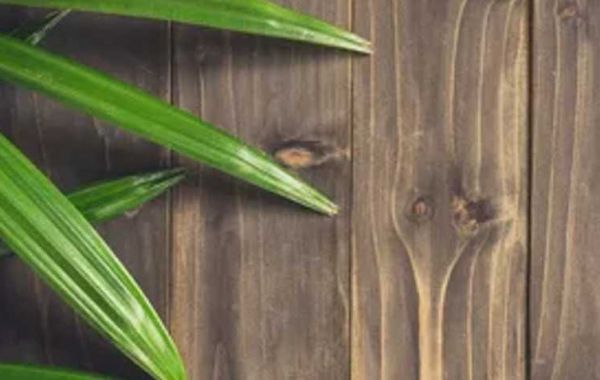Today it seems almost implausible how many discoveries in atomic physics have been made using natural sources of radioactive radiation with energies of only a few MeV and the simplest detecting devices. The atomic nucleus was discovered, its dimensions were obtained, a nuclear reaction was observed for the first time, the phenomenon of radioactivity was discovered, the neutron and proton were discovered, the existence of neutrinos was predicted, etc. For a long time, the main particle detector was a plate with a layer of zinc sulphide deposited on it. The particles were registered with the eye by the flashes of light they produced in zinc sulfide.
Over time, the experimental setup became more and more complex. The technique of acceleration and detection of particles and nuclear electronics were developing. Advances in nuclear and particle physics are increasingly determined by progress in these areas. Nobel Prizes in Physics are often awarded for work in the field of physics experiment technology.
The detectors are used both to register the very fact of the presence of a particle and to determine its energy and momentum, the trajectory of the particle, and other characteristics. To register particles, detectors are often used that are maximally sensitive to the registration of a particular particle and do not feel a large background created by other particles. Interactions of charged particles, explanation of electrification of bodies based on the theory of the structure of matter.
Usually, in experiments in nuclear and particle physics, it is necessary to single out the "necessary" events against a gigantic background of "unnecessary" events, maybe one in a billion. For this, various combinations of counters and registration methods are used.
Registration of charged particles is based on the phenomenon of ionization or excitation of atoms, which they cause in the substance of the detector. This is the basis of the work of such detectors as the Wilson chamber, bubble chamber, spark chamber, photographic emulsions, gas scintillation and semiconductor detectors.
1. Geiger counter
A Geiger counter is, as a rule, a cylindrical cathode, along the axis of which a wire is stretched - an anode. The system is filled with a gas mixture. When passing through the counter, a charged particle ionizes the gas. The generated electrons, moving to the positive electrode - filaments, falling into the region of a strong electric field, are accelerated and, in turn, ionize gas molecules, which leads to a corona discharge. The signal amplitude reaches several volts and is easily recorded. The Geiger counter registers the fact of the passage of a particle through the counter, but does not allow measuring the particle energy.
2. Wilson chamber
The Wilson chamber is a track detector of elementary charged particles, in which the track (trace) of a particle is formed by a chain of small droplets of liquid along the trajectory of its motion. Invented by C. Wilson in 1912 (Nobel Prize in 1927).
The principle of operation of the Wilson chamber is based on the condensation of a supersaturated vapor and the formation of visible liquid droplets on ions along the track of a charged particle flying through the chamber. To create a supersaturated vapor, a rapid adiabatic expansion of the gas occurs using a mechanical piston. After photographing the track, the gas in the chamber is compressed again, the droplets on the ions evaporate. The electric field in the chamber serves to "clean" the chamber from ions formed during the previous ionization of the gas. In the Wilson chamber, tracks of charged particles become visible due to the condensation of supersaturated vapor on the gas ions formed by the charged particle. Drops of liquid are formed on the ions, which grow to a size sufficient for observation (10–3–10–4 cm) and photography in good lighting conditions. The working medium is most often a mixture of water and alcohol vapors under a pressure of 0.1-2 atmospheres (water vapor condenses mainly on negative ions, alcohol vapors on positive ions). Over-saturation is achieved by a rapid decrease in pressure due to the expansion of the working volume. The capabilities of the Wilson chamber are greatly enhanced when placed in a magnetic field. The sign of its charge and momentum are determined by the trajectory of a charged particle curved by a magnetic field. With the help of the Wilson camera in 1932, K. Anderson discovered a positron in cosmic rays.
3. Bubble chamber
A bubble chamber is a track detector of elementary charged particles, in which the track (trace) of a particle is formed by a chain of vapor bubbles along the trajectory of its motion. Invented by A. Glaser in 1952 (Nobel Prize 1960).
The principle of operation is based on the boiling of a superheated liquid along the track of a charged particle. A bubble chamber is a vessel filled with a transparent superheated liquid. With a rapid decrease in pressure, a chain of vapor bubbles is formed along the track of the ionizing particle, which are illuminated by an external source and photographed. After photographing the trail, the pressure in the chamber rises, the gas bubbles collapse and the chamber is ready for operation again. Liquid hydrogen is used as a working fluid in the chamber, which simultaneously serves as a hydrogen target for studying the interaction of particles with protons.
The Wilson chamber and bubble chamber have the huge advantage that all charged particles produced in each reaction can be observed directly. In order to determine the type of particle and its momentum, the Wilson chambers and bubble chambers are placed in a magnetic field. The bubble chamber has a higher density of the detector substance compared to the Wilson chamber, and therefore the charged particle ranges are completely enclosed in the volume of the detector. Deciphering photographs from bubble cameras is a separate laborious problem.
4. Nuclear emulsions
Similarly, as it happens in ordinary photography, a charged particle breaks along its path the structure of the crystal lattice of silver halide grains, making them capable of manifestation. Nuclear emulsion is a unique tool for recording rare events. Stacks of nuclear emulsions allow the registration of very high energy particles. They can be used to determine the track coordinates of a charged particle with an accuracy of ~ 1 micron. Nuclear emulsions are widely used to register space particles on balloons and spacecraft.
Photoemulsions as particle detectors are to some extent analogous to the Wilson and bubble chambers. They were first used by the English physicist S. Powell to study cosmic rays. Photoemulsion is a layer of gelatin with grains of silver bromide dispersed in it. Under the influence of light, latent image centers are formed in the silver bromide grains, which contribute to the reduction of silver bromide to metallic silver when developing with a conventional photographic developer. The physical mechanism for the formation of these centers is the formation of metallic silver atoms due to the photoelectric effect. Ionization produced by charged particles gives the same result: a trace of sensitized grains appears, which, after development, can be seen under a microscope.
5. Scintillation detector
The scintillation detector uses the property of certain substances to glow (scintillate) when a charged particle passes. The light quanta formed in the scintillator are then registered using photomultipliers.
Modern measuring devices in high-energy physics are complex systems that include tens of thousands of counters, complex electronics and are capable of simultaneously registering dozens of particles produced in one collision.








